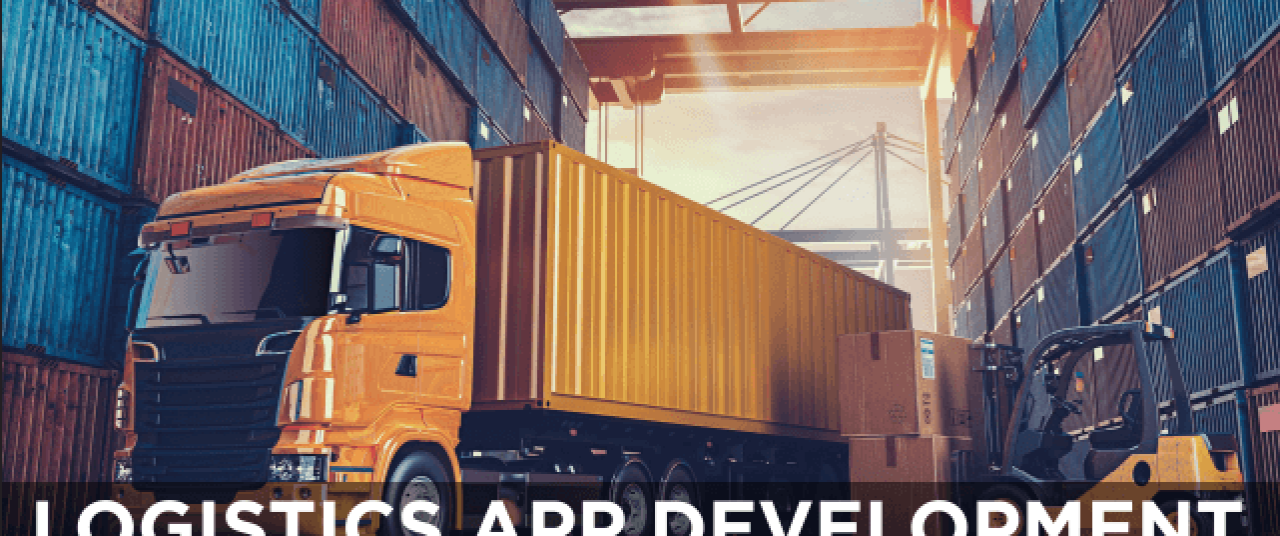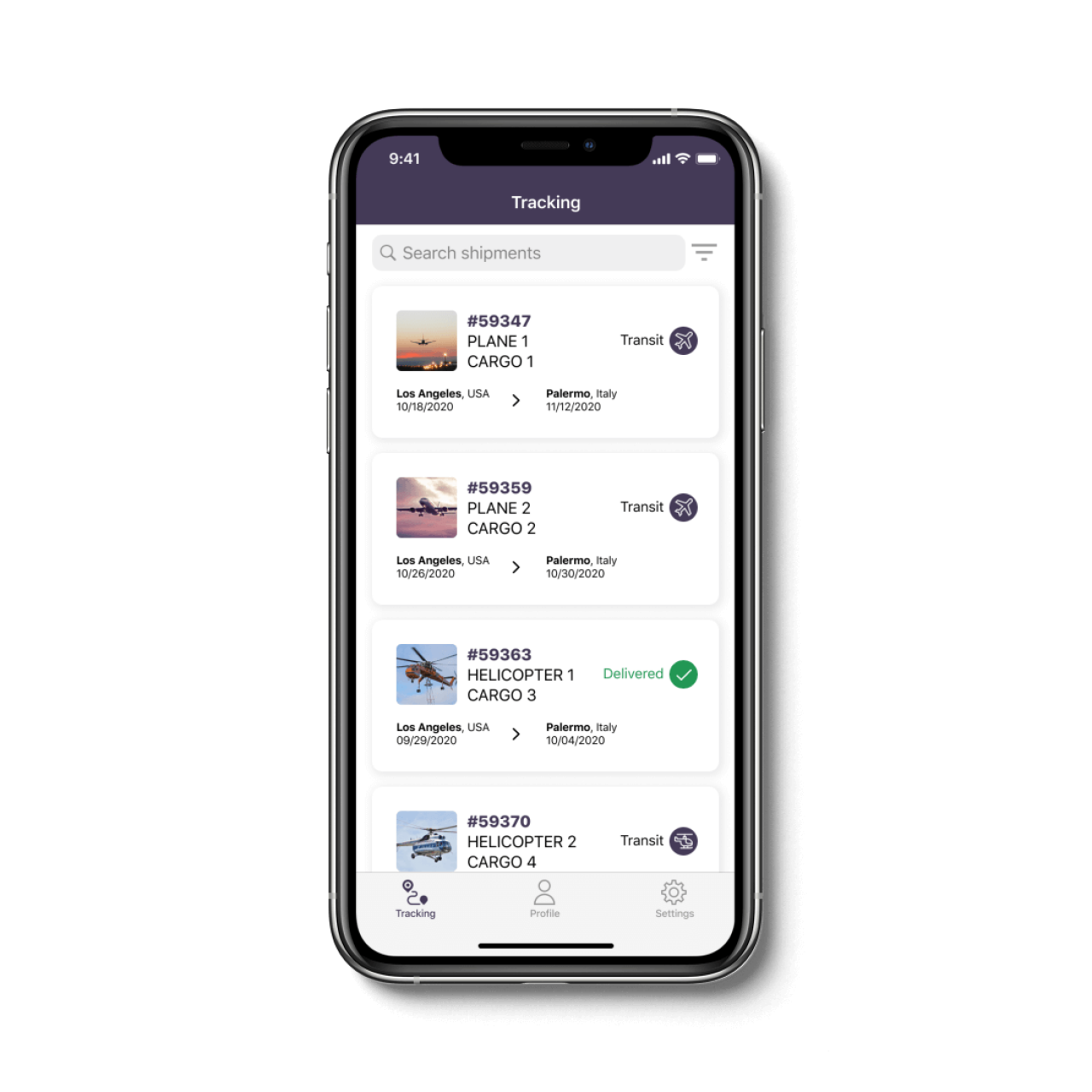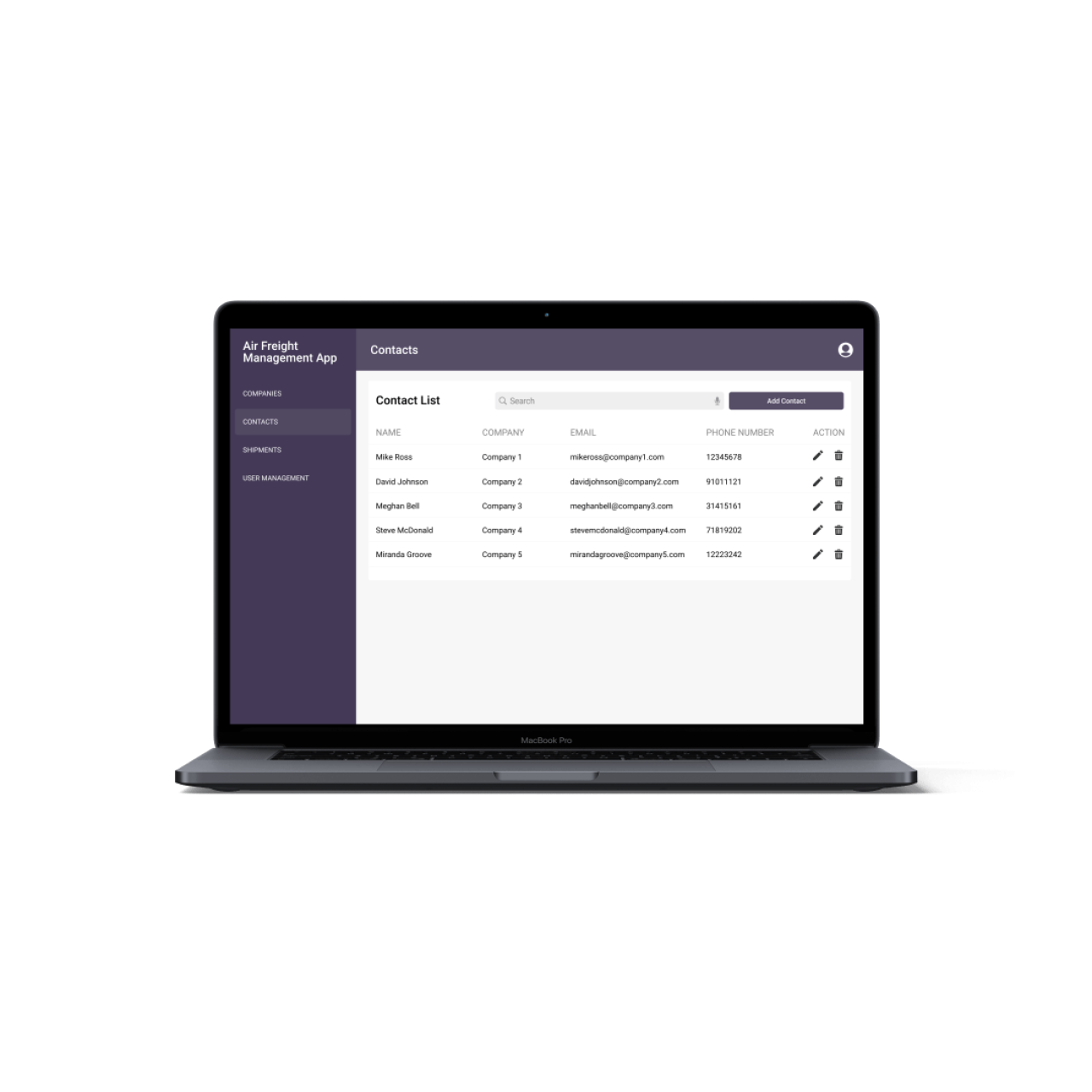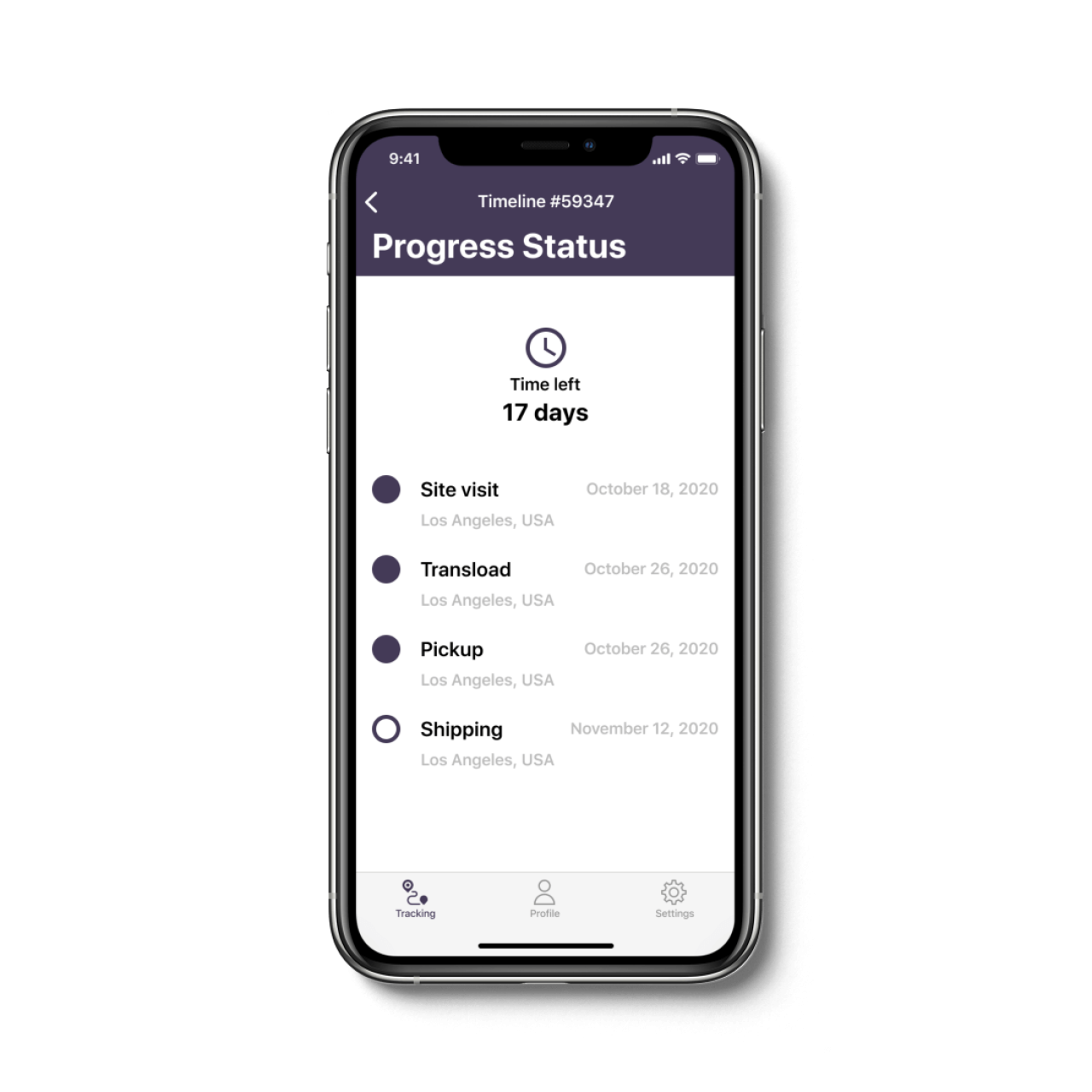Logistics App Development: Process, Features, and Cost

The thought of shipping and delivering goods across international borders can be stressful for business owners. You may have faced logistical challenges, including the following:
- Warehouse costs outpace the growth of cargo turnover;
- Too much time is spent on checking the load board;
- The shortage of cargo may be as high as 8-20% of the freight. This means that anywhere between 20 and 30% of miles are driven by empty freights. In some cases, trucks drive 300 miles just to pick up a load.
- Document flow is complex and not automated;
- There is no systemized database for the transportation market;
- Implemented WMS creates more difficulties than benefits;
- Lack of information about the status of the transaction in transit.
Needless to say, international shipping can become a thorn in your side. Fortunately, many of these issues can be resolved by logistics mobile solutions. Logistics mobile apps can reduce empty mileage by 80% compared with industry standards by using data science, artificial intelligence, and algorithms. This solution makes the work across all departments both visible and predictable.
In this article, we will show you how to get the maximum benefit from logistics applications in the logistics and transportation industry. We will also give you a glimpse into the common features of logistics apps as well as consider the cost and development process of logistics apps.
Here’s What We’ll Cover
Reasons to Create a Mobile App for a Logistics Business
To begin with, let’s have a look at reasons to develop a mobile app for a logistics business.
Integration of a mobile application strategy with the workflow will provide you with the following benefits:
Automation of Paper-based Processes
In the past, 80% of a warehouse’s operation was conducted manually. The automation of paperwork will boost your productivity. You will receive instant access to a company’s database, save time, and ensure that your data is safe and easily accessible.
Time Saving and Costs Reduction
Mobile apps for logistics enable you to optimize routes, predict fuel expenses, and reduce empty miles.
Dispatches and Route Optimization
Warehouse management solutions can also optimize dispatches and routes. Additionally, they allow you to manage rides, reduce miles driven, and increase revenue.
Effective Warehouse Management
As all the data will be stored in a database, it will be easier to store goods and check the inventory.
Efficient Vehicle-Tracking
An integrated GPS tracking feature allows you to achieve more coordinated shipment and predict the vehicle’s dispatch time.
How to Create a Logistics App
Our customers often ask us to estimate the logistics application development. However, they are not sure what type of application to choose and what functions are needed. Our experience has shown us that such an estimation is almost impossible without these data.
Therefore, we recommend you decide which type of app best suits you before getting in touch with mobile developers. You should also be aware of the main development stages to improve communication with your development team.
Finally, we have laid out the crucial logistics app development stages to provide you with a deeper understanding of the app development process.
Choosing the Type of Logistics App
As logistics apps differ according to purpose, end-users, and the feature list, you should decide which type of app you are going to build and select one of the following:
Fleet Management Mobile Apps
If you own a large truck fleet, a fleet management system will help you to register, manage, and store all the data about your trucks. Such transport logistics software allows you to track essential metrics like vehicle maintenance history, service costs, and fuel consumption. This will provide you with deep insights into your total costs.
Fleet management apps consist of a driver’s app and web-based admin. The driver’s app enables users to update information on the vehicle. The admin app allows you to assign the user’s role, track statistics of your fleet, schedule reminders, and so on.
Logistics On-Demand Mobile Apps
On-demand delivery logistics apps unite vehicle drivers with shippers who need their goods to be delivered. Thus, the app consists of a carrier app, a shipper app, and an admin panel. Such an app works in the following way: shippers post a delivery request, then the platform notifies the nearest free driver. Once the driver picks up the goods, shippers can track the vehicle location via GPS. After the delivery is completed, the app notifies the sender about successful shipping and sends an invoice.
To make money, shipping on-demand apps charge a software service fee based on the total delivery.
Warehouse Mobile Apps
To ensure that shipments have been delivered to the correct location within the stated timeframe, we recommend you consider barcode-scanning app development.
Third-party APIs allow such applications to identify different barcodes and integrate them with your warehouse database for real-time updates. Additionally, barcode scanning apps cut expenses on barcode scanners and reduce human error. In a nutshell, barcode scanning enables you to increase your warehouse employee efficiency.
Tracking and Forwarding Applications
Tracking and forwarding applications provide real-time data concerning routes and delivery of goods. They also display current drivers’ locations.
Once you have gathered all the necessary data about your logistics mobile app, it is time to find mobile-app developers.
The Most Common Logistic App Features
Usually, a logistics app has three modules: customer, driver, and admin. Following are the most common logistic-app features grouped according to this classification.
| Admin Panel | User Panel | Driver/Dispatcher Panel |
| The dashboard allows you to see orders and data on shippers, carriers, and vehicles. | The registration and login feature is required on both the shipper and driver sides. If you’re aiming to provide services for individuals, we recommend allowing registration and login via social networks or automatic login via email. | Registration and login processes will differ; users can use email registration, registration via social media, or personal login and password. |
| Billing management helps to check and approve invoices that come through the app. | The vehicles catalog enables shippers to pick a type of vehicle for moving their goods based on its size and weight capacity. If you own a fleet, you can also allow shippers to choose a vehicle. | Shipment details. Before accepting a shipment request in your app for logistics, drivers should see all pertinent data about the goods. |
| The driver-monitoring function checks each driver’s location, tracks where they stop and for how long, and sees any pending orders. | Vehicle booking allows you to avoid situations where a suitable vehicle is unavailable. You can utilize an option to book a vehicle in advance. | Sorting and filters allow drivers to filter shipment details by date, pick-up location, destination, and type of cargo. |
| Vehicle monitoring provides information on a vehicle’s condition, location, speed, stops, and fuel consumption. | Alerts and reminders notify shippers that their cargo has been delivered. | The request management function enables carriers to cancel an order in case of a change in circumstances. |
| Vehicle tracking provides shippers with an opportunity to check where their goods are at any given moment and see if it’s being delivered according to schedule. | Route tracking and optimization features help carriers a great deal when making deliveries. Tracking of vehicle routes in real-time as well as improvement routes according to traffic, road repairs, and accidents will enhance the services you provide. | |
| Payment gateway integration allows shippers to pay for cargo delivery directly from the app, without the inconvenience of cash or bank transfers. To achieve this, we recommend you integrate a payment gateway. For instance, Uber uses Braintree to manage payments. | The proof of delivery function can be performed by uploading a photo or document. | |
| Ratings and reviews allow shippers to rate drivers. |
Add Further Features to Win More Users
Whether you’re planning to take on a giant like Uber or you’ve got your own niche, these features can help your app stand out:
- Chat: This can be used by drivers to notify shippers of any delays. Also, it allows carriers to contact shippers for additional details.
- Near-Field Communication and QR Code Reader: The QR code feature can be useful for shipments. This eliminates the possibility of mixing up cargo. Near-field communication, or NFC, can be adopted for delivery verification.
- Support for Multiple Languages: Chances are, shippers won’t all speak the same language. Support for multiple languages is not a must-have feature. However, it helps to boost your business if you’re operating in multiple countries.
Find Logistics Mobile-App Developers
At this stage, you should consider not only technical expertise but also communication with your development team. There are many ways to find and hire mobile app developers. Here are the most reasonable sources for finding app developers:
- Job portals: You can check well-known portals like Dice.com and Glassdoor.com.
- Freelance websites: If you need to outsource a developer with special skills, you can search for an app developer through freelance sites like LinkedIn, Indeed, Upwork, People Per Hour, AngelList, Guru, and Behance.
- Forums: For iOS or Android developers, check out forums such as iOS Developer, MacRumors, GDGs, Android Forums, AndroidPit, or Reddit.
- Repositories: Open-source repositories like GitLab and GitHub enable you to estimate developers’ skills and view code samples.
- Directories: Look through online directories and communities for developers such as They Make Apps, Topcoder.com, or Polycom.
- B2B directories: B2B platforms like GoodFirms, Appfutura, Businessofapps, Softwareworld, Itfirms, and Clutch list application-development outsourcing companies and group them by location, rating, and expertise.
- Tech blogs: Glance through mobile-app development companies’ blog posts to determine whether a company’s expertise suits your project idea.
- Social media: LinkedIn, Facebook, and Twitter enable direct communication with experienced candidates.
Additionally, you can have a read of our article, “How to hire an app developer: Crucial steps before hiring”. In this post, we’ve collected tips about how to hire a mobile app developer and where to find them. We also discuss the differences in choosing between software companies and freelancers as well as common mistakes in hiring.
Explain Your Business Idea
Following this, a consultant will get in touch with you to gather more information on what logistics app you are going to develop; its features, users, and so on. Next, this information will be forwarded to business analysts, who will roughly estimate the costs of your app.
At this stage, you may also ask to sign an NDA.
Receive a Rough App-Estimate
A rough estimate of the app’s cost may differ from the final cost. This depends on tech details and requirements. We highly recommend you avoid companies that promise to develop a complete logistics platform for extremely low costs.
Start the Discovery Stage
At the discovery stage, your development team will design a project specification that outlines project goals, user stories, the list of technologies, architecture, and so on. As a result of this stage, you will receive the project specification, prototype, and final estimate.
More information on the project specification can be found in the “Functional vs Non-functional Requirements: Examples and Types” post.
Develop and Launch Your Logistic App’s MVP
Before delivering the feature-rich app, the team will create an app MVP that involves only the basic features needed to prove your business idea.
At this stage, you receive the final demo of your app. Also, your development team will release the app to the App Store or Google Play Store.
Add Additional Features to Logistics App
After receiving the users’ feedback, you should consider what advanced logistics app functions to add next.
How Much Does It Cost to Create a Logistic App?
It’s tricky to provide an estimated cost of the logistics app development without knowing the app’s type or its essential features. The cost may vary from $30k for a basic application with limited features to $250k for a multiplatform app.
For instance, the cost to build an app like Uber Freight, Convoy, or Doft will start at about $50,000. This price includes building an MVP for Android or iOS and hiring one person for each technology. A multi-platform app with premium features will cost you $120,000 or more.
If you want to receive a more accurate logistics app cost estimation, feel free to contact our manager.
The VironIT’s Experience in Logistics Mobile-App Development
Our team has delivered several projects for customers from logistics domains.
For instance, an HK-based helicopter-shipping company entrusted us with developing a mobile logistics platform to facilitate their helicopter shipment process.
The helicopter shipment management platform consists of Android and iOS mobile apps for clients and an admin panel for a transportation company’s employees. This app enables end-to-end visibility on helicopter shipments for clients.
In short, the client gets access to the real-time location of the helicopter while in transit as well as receiving a push notification on the latest status, group chat, documents, GPS location, and more. The system connects end-users to the world’s supply chains, with a virtual network of 300 destinations spanning 80 countries.



As a result, the client received an up-to-date mobile app with flexible architecture and an updated design.
Your supply chain is the lifeblood of your company. When this is disrupted, the outcomes can be financially and operationally painful. The logistics application can be a trouble-shooter for the logistics and transportation industry. It enables you to have full control over your business and improves its performance.
If you are considering logistic mobile app development and still have questions, we are always here to help.




